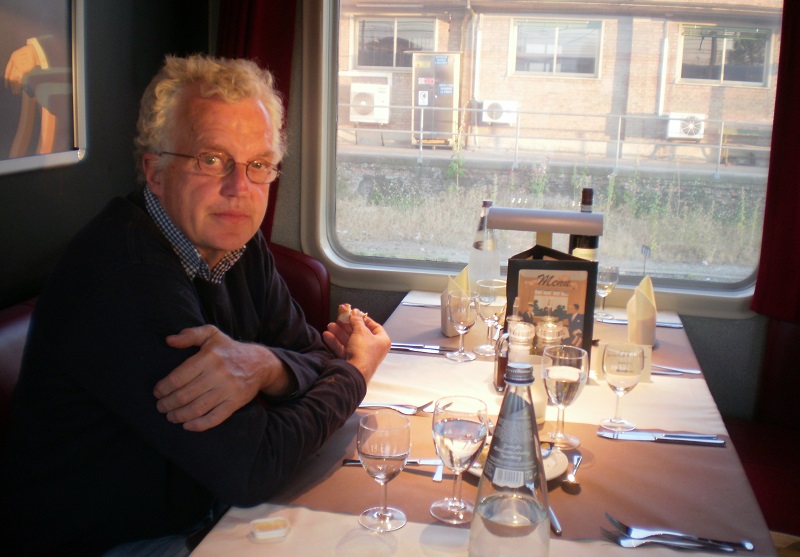The fantastic thing about this selection of three films is the discovery of just how much changed in the decade between the early 1950s and the early 1960s. It is easy to think that the fifties were a grey period of gradual emergence from postwar austerity but the contrast between two of these films shot a decade apart is as great – if not greater – than that between the latter, filmed in 1962, and the present day.
One of the films, Operating London, was a never completed film by British Transport Films which was shot in 1952/3. This is still very much post war London with black and white shots of clanky trams and trolleybuses whose poles keep on falling off. Contrast this with the 1962 All That Mighty Heart which is shot in colour and shows a very different world. The technology has changed completely. The Underground trains look sleek and elegant, glowing in their clean red liveries (we even see men washing the trains by hand) in contrast to the crude pre-war stock. Routemasters have appeared on the streets, the trolleybuses and trams have disappeared, and the Victoria Line which is controlled by computers rather than the drivers, is being hewn out of London’s clay under the streets. The cyclists who dominated the streetscape in the fifties have all but disappeared and the roads, so empty in the years after the war, are beginning to be jammed with private cars and vans. London Transport still looks as if it in its heyday, even though behind the scenes there was massive underinvestment from which we are still suffering today.
Although this is before the Beatles, short skirts and swinging London which changed fashions forever, the people in this second film appear to be from today’s world whereas those in the first, mostly sullen cloth capped men in gabardine coats, belong very much to the first half of the 20th century.
The third film on this focuses on a little known aspect of the Coronation, the transportation of tens of thousands of ‘lucky’ children – generally two from each class chosen by ballot, and not always, according to the commentator, ‘the best behaved’ – to line the streets of the procession. There were specially organised children’s buses and trains, as much of London Transport’s system was shut down for the great day. There’s lots of fabulous shots of grinning kids and rather worried looking schoolteachers, all being shepherded in crocodiles and following banners each with a strange code to their appointed place on the Embankment. Like many such jolly films which certainly seem, in today’s parlance, more like advertorial than journalism, it begs more questions than it answers. The one that I most wanted to know was that given that they are shown supping cartons of Kia Ora orange squash and sucking sweet ice lollies, where on earth did they all pee during the long and at times wet wait for her Maj? But you don’t get any mention of ‘conveniences’ in the fifties.
The abundance of old film now available on DVD or simply through downloading from websites, is so great that it is sometimes difficult for today’s editors to present in a coherent or interesting form. The great thing about this DVD is that, without any commentary or interpretation, the visual contrast between the films in this clever selection is so evident that it tells us more about our recent history than a simple narrative ever would.
